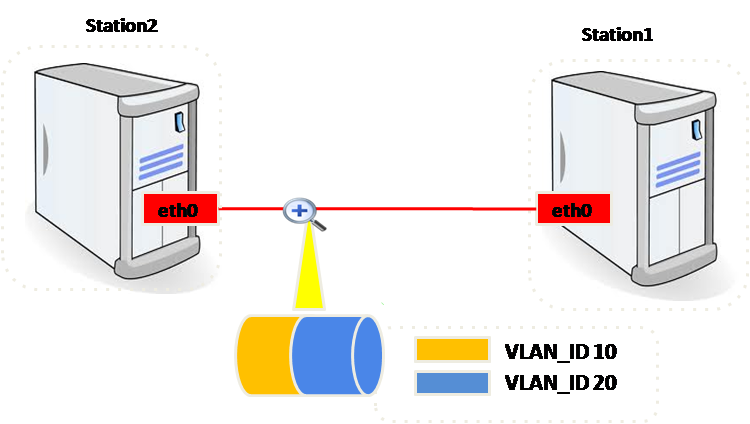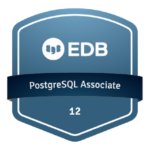This article explains how to set up a VLAN trunk configuration in CentOS and RedHat.
Contents
- VLAN ?
- Set up a VLAN configuration
1- VLAN:
VLAN is Virtual Local Area Network. That’s mean several LANs can co-exist on a single physical network card. Since Linux 2.4, Linux support’s the 802.1q driver and if you are more than 2 servers (more than 2 NIC card) you should have a switch that support the VLAN network.

VLAN Concepts
2- Set up a VLAN configuration:
I have two stations with one network card each one (eth0):
1- Configure the Ethernet interface eth0.
# vi /etc/sysconfig/network-scripts/ifcfg-eth0
DEVICE=eth0
BOOTPROTO=none
ONBOOT=yes
TYPE=Ethernet2- Create a VLAN with ID 10
# Vi /etc/sysconfig/network-scripts/ifcfg-eth0.10
DEVICE=eth0.10
BOOTPROTO=static
ONBOOT=yes
IPADDR=192.168.10.X
NETMASK=255.255.255.0
USERCTL=no
VLAN=yes3- Create a VLAN with ID 20
# Vi /etc/sysconfig/network-scripts/ifcfg-eth0.20
DEVICE=eth0.20
BOOTPROTO=static
ONBOOT=yes
IPADDR=192.168.20.X
NETMASK=255.255.255.0
USERCTL=no
VLAN=yes4- Restart the networking service:
# service network restart Shutting down interface eth0: [ OK ] Shutting down loopback interface: [ OK ] Bringing up loopback interface: [ OK ] Bringing up interface eth0: [ OK ] Bringing up interface eth0.10: Added VLAN with VID == 10 to IF -:eth0:- [ OK ] Bringing up interface eth0.20: Added VLAN with VID == 20 to IF -:eth0:- [ OK ]
Note: On the other station (station2), do the same configurations for the eth0 network interface: ifcfg-eth0, ifcfg-eth0.10 and ifcfg-eth0 just change the IP address (.X to .Y)
5- Module is loaded:
The driver name 8021q on Linux which manage the VLAN
# lsmod | grep 802 8021q 19811 0
3- Conclusion:
With the VLAN, you can create many LAN with one network card (logically separated).













